Today I want to talk about how you can save time migrating documents with RapidStart Services in Microsoft Dynamics 365 Business Central (BC). Business Central is not the first version of ‘NAV’ to have RapidStart Services.
As an aged toolkit, it has a broad range of capabilities which may be challenging to apply for a first-timer correctly.
Business Objective: Import sales/purchase documents from excel into Business Central.
Approach: Create a specific package to bring that data in. We will make a package with an example document to use as a reference point, send it to excel, put our documents in it, send it back to Business Central, apply and validate the package, and (hey presto!) our documents will be ready to go.
Prerequisites: You have been set up by your service provider with licences and permissions. (Or are trying out the process in Cronus – Microsoft’s own demo company).
RapidStart Services can be found under the names Configuration Packages, Configuration Templates, etc. depending on what purpose they are used for.
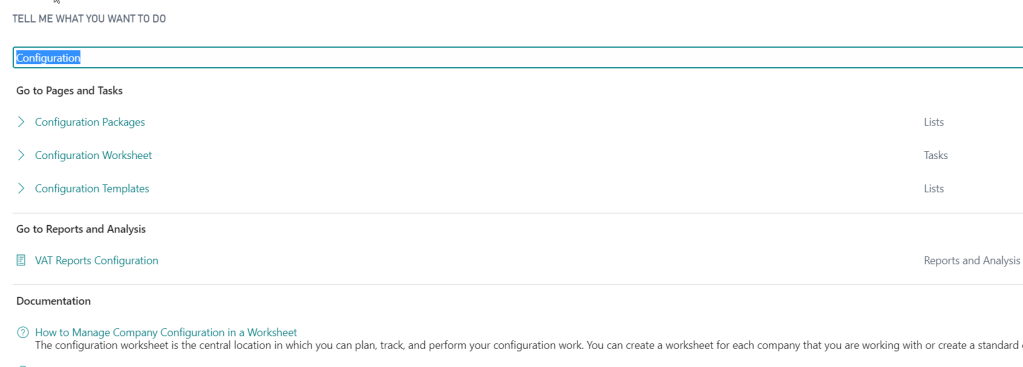
Templates are for uploading master data (customers, suppliers, fixed assets, etc.).
Worksheets and packages give you options on which tables and fields to import to, allowing you to bring documents such as invoices straight from excel into Business Central.
So, let’s say that we are importing some Sales Invoices into a new “company” on Business Central.
We need to make a specific package to bring that data in, preferably without errors or missing information.
So… following the standard procedure:
- Go to Configuration Packages…
- Click NEW
- Give your package a sensible name and relevant description

- Give it a Language ID: 1033 in English.
- Don’t forget to click Exclude Config. Tables, as failing to do so will mean they will be automatically dropped in when you export the package.
The next step is adding the relevant tables to our package, and then relevant fields in those tables.
This may seem daunting, but this is as complicated as this process gets.
To know which tables are accessed for a given process takes a little investigation on your part…
First, in a test system, go and make a document of the type you want to export/import (in our example a Sales Invoice.)
When we are there, we will be able to do two things:
- Inspect the page to reveal which tables are accessed. (To inspect a page go to the “?” in the corner -> click “Help & Support” -> then click “Inspect Pages and Data” or Ctrl+Alt+F1)
- Put ourselves in the shoes of a Sales Order Processor and find out which fields are filled in when an invoice is created. (Make a note of every field that YOU fill in, the auto-filling fields we need not include in our package.)

While filling in the invoice, we can see that the tables being accessed are “Sales Header” and “Sales Line”. (“Page Inspection” will show you as you click/fill-in each part, which table is being accessed).
You can now add your desired tables as lines on your configuration package, and by clicking the Table button, access options on:
- Filters (where we can specify the Document Type to be, say, invoice.)
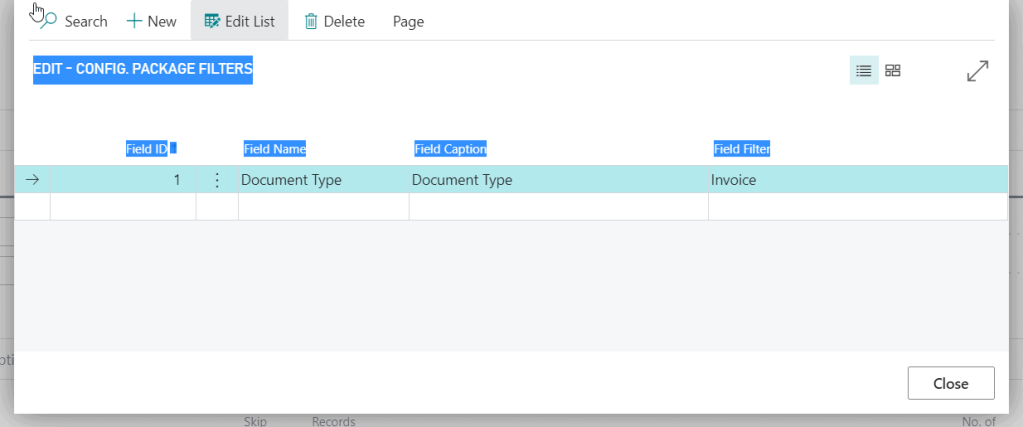
(Document Type is specified as invoice… (the filter value is case-specific))
2. Fields (where we can select/tick the fields we wish to include.)
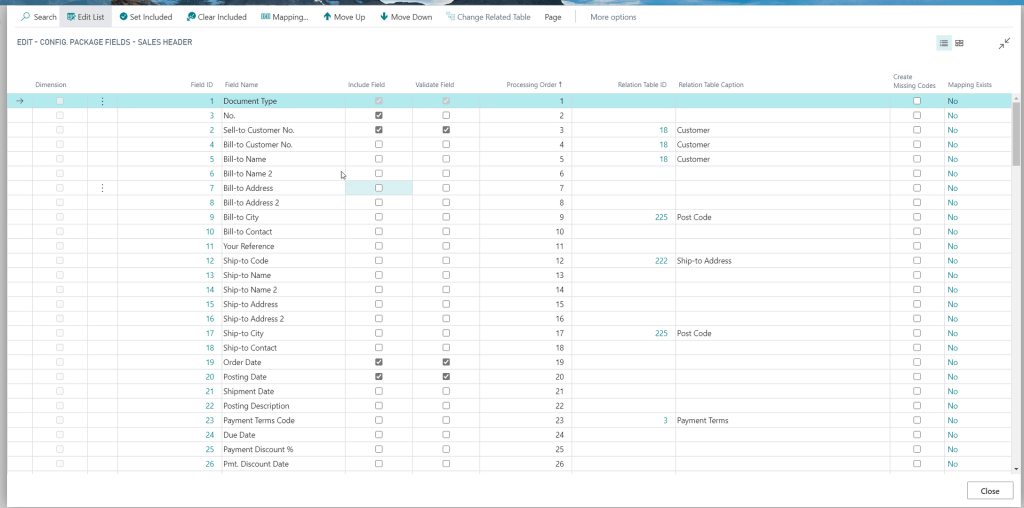
(Fields can be ticked as included. Click “Edit List” twice to make the list editable. Careful of the “Clear Included” button, which unticks everything)
Don’t forget to include dimensions. On the fields list, you can select the primary dimensions only, but there is a tick box on the Table line, “Dimensions as Columns” which will allow you to have all of your dimensions in your package.
Next, click Process -> Export Package. (This saves your package in totality, independent from the data you will import with it… Just in case a mistake is made, so you don’t have to remake it.)
We are ready to get out invoices from excel. Click Package -> Export to excel.
(Once in excel you can enable editing, copy in your data, and re-save it with a new name for importing.)
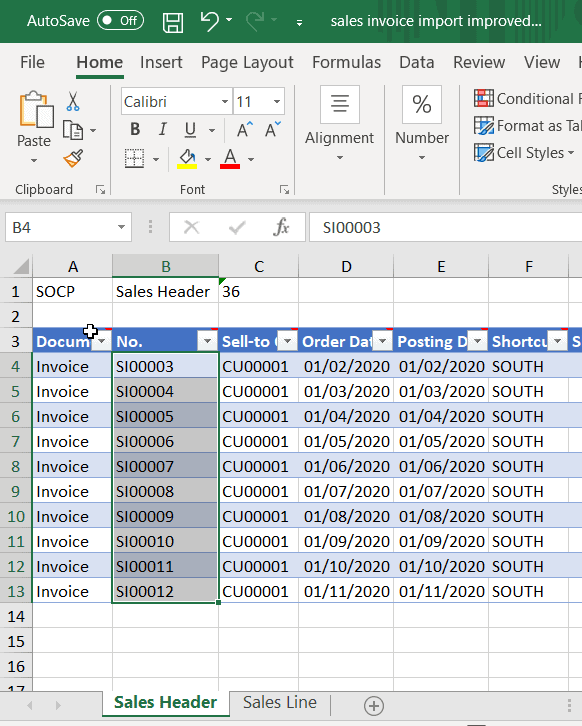
Now for some time- saving tips:
- Only use the necessary fields. Once a field is included in the package, it will need to be populated or when you import the data to BC, blank values will be ascribed to those fields. This might not sound bad but can cause issues if those said fields would have been auto-populated by the system and don’t want to be blank. For example, the due date is calculated by Business Central for you from the customer’s Payment Terms added to the Posting Date. So, include Posting Date but leave out Due Date.
- When you have entered your data (invoices in this case) onto your package in excel and have imported it to BC (Package -> Import from excel), you may get errors… this might be because Business Central does not know in which order to apply the data. Try clicking the Table Line of the table you want to apply first (for instance when making an invoice you would always make the header before you make the lines, so click Sales Header), then click Functions -> Apply data. This will force BC to apply that table first. Then try again at applying the whole package (At the top of the Config. Package card in the ribbon… Actions-> Functions -> Apply Package).
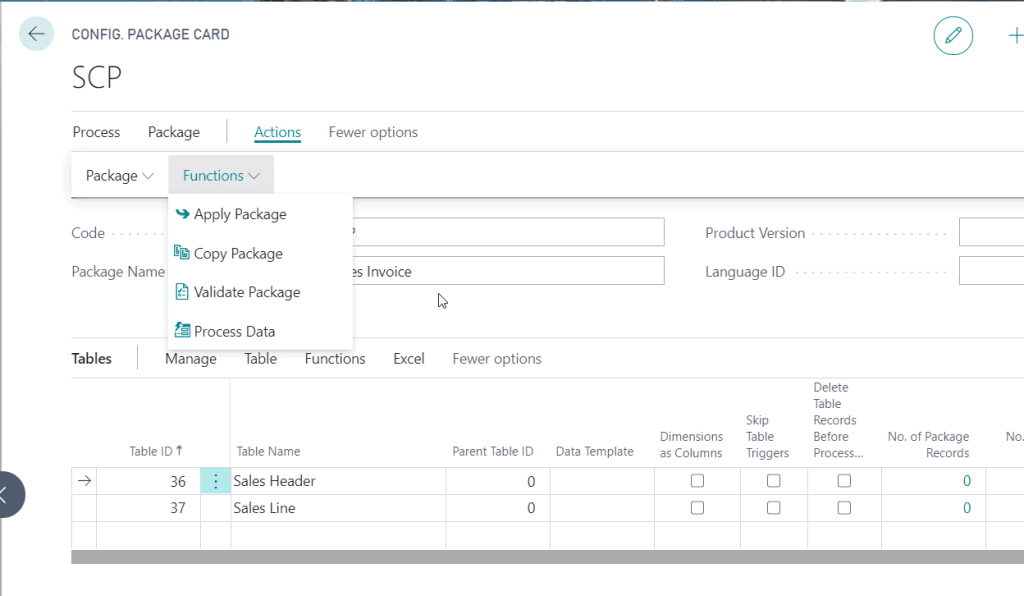
After applying the package, validate it (Actions-> Functions – > Validate Package).
Then go and admire your successfully imported documents.
For more help on Configuration Packages:
https://docs.microsoft.com/en-gb/dynamics365/business-central/admin-how-to-prepare-a-configuration-package



